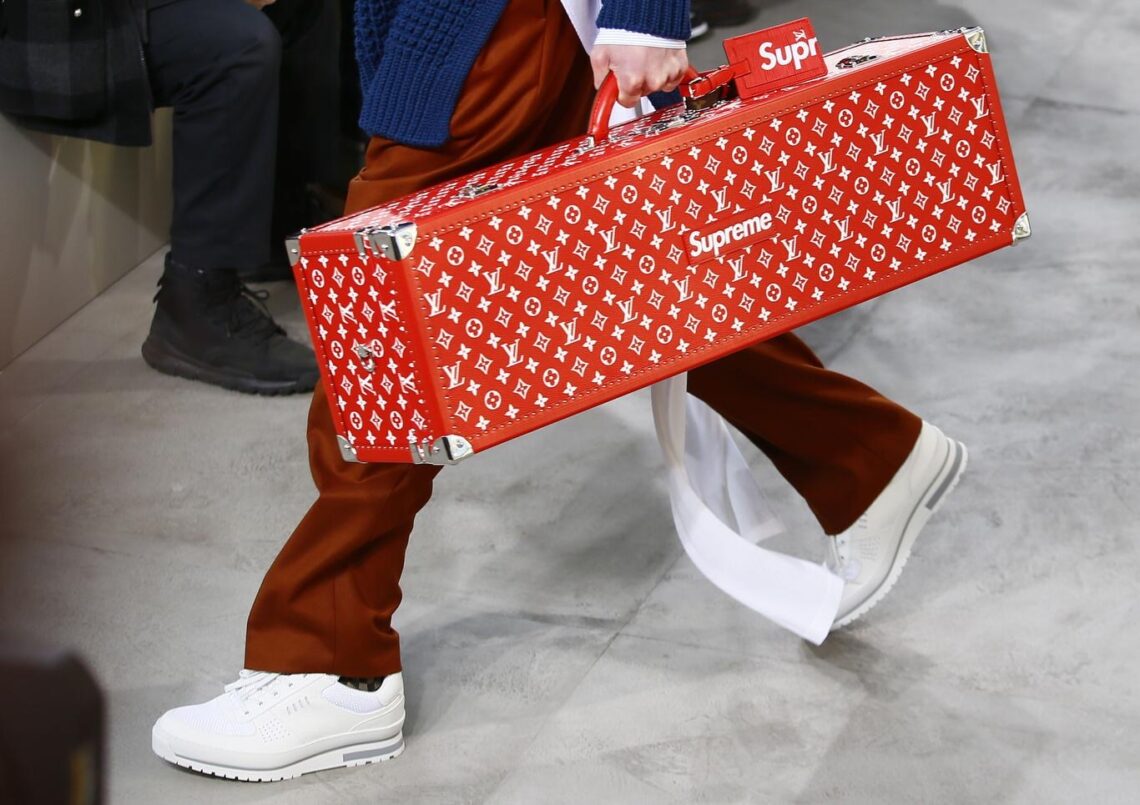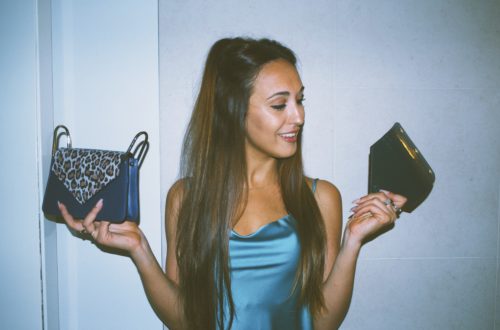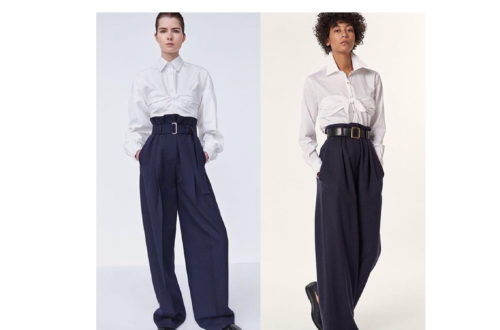As the saying goes, two heads are better than one. The fashion industry has proven to seriously take this old proverb into account, considering the huge proliferation of collaborations between brands over the past several years.
The question, then, is: “When did this all start?
Back in January 2017, Paris: Supreme and Louis Vuitton announced their very first and unlikely collaboration, dropping on the fashion world the bomb that since then sharply modified the fashion industry brands’ trend.
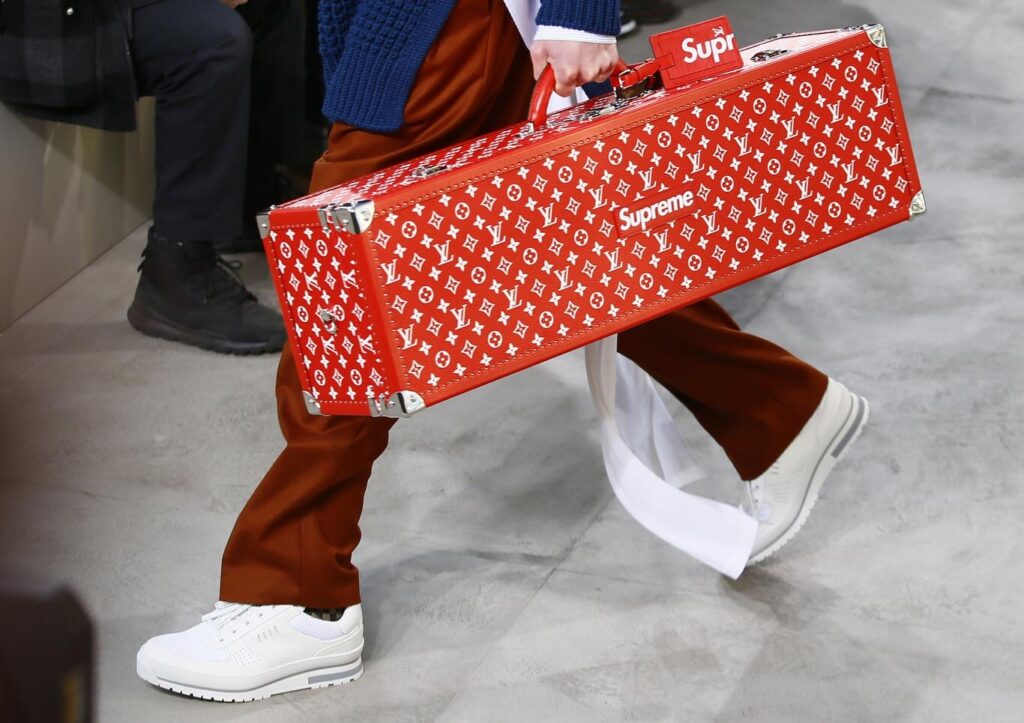
Let’s step back for a moment. The truth is that collabs, including those with artists, celebrities and musicians, have always been around since the 1930s. However, it was a rare phenomenon until the early 2000s.
There was a time when the fashion world was not as dynamic and unpredictable as it is today. Each brand had a permanent, long-lasting creative director capable of imprinting a personal style to the label. The target customer was set and clear and, above all, names and projects were meant to endure.
Nevertheless, times have changed and the garment industry had to adapt to the new contemporaneity. According to Osman Ahmed, Senior Editorial Associate at the Business of Fashion, brands are being asked, more than ever before, to offer something different from their heritage to consumers that are difficult to retain. Fashion labels have tried many different approaches to face the challenge and the most effective solution has been found in collaborations.
Vivienne Westwood and Burberry, Comme des Garcons x Gucci or the Moncler Genius project are just a few recent examples of successful co-branding strategy. Actually, collabs offered to luxury brands an alternative way to renew their image and broaden their target audience.
Now back to the aforementioned game-changer, the Supreme and Louis Vuitton collab. Why is it so relevant? Because from that moment on, the bond between high fashion and streetwear has definitely been legitimized and has inspired many other luxury brands to follow suit. That’s the case of Prada, which gave birth to a partnership with Adidas in December 2019, or Dior, which successfully collaborated with Nike delivering a pair of sneakers that soon became the most-wanted men’s product of 2020, according to fashion shopping platform Lyst. The main reason behind the success of such collabs can be summed up in one word, “hype”: they manage to combine and bring together several categories of customers and the event is perceived as extraordinary and groundbreaking, with the result of an easy sold out for the collection.
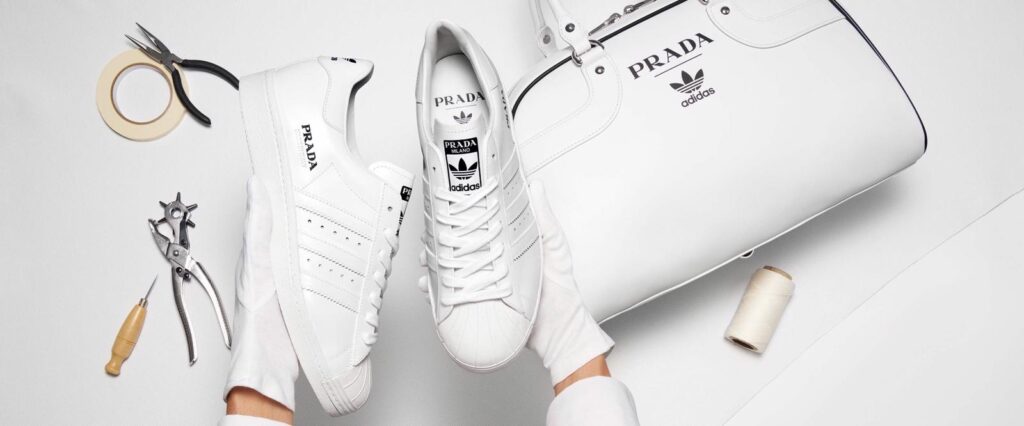
All in all, collabs are now the best marketing tool to boost brand awareness. However, not all of them bring to the same outcome: if the collab occurs between brands operating in the same market, they will both benefit from the fame and reputation of the other, mutually raising their status. On the other hand, in case of a partnership between labels whose customers represent opposite market fields, collabs give a concrete chance to the smaller one to reach an ever-increasing number of consumers, while the stronger brand shows its capacity to reinvent itself.
Furthermore, collaborations have a low-risk factor: partnerships are temporary and fashion brands only cooperate at capsule collections, meaning that the final items are offered to the public in limited edition. This implies that, in the case of a collaboration failure, losses for the involved brands will be limited and will not undermine their image.
As not all collabs turn out to be successful, but rather contrived in the attempt to widen sales, there are several elements that have to be considered when creating a winning and effective collaboration. Firstly, the partnership must be based on a common purpose, as for Adidas and Parley For The Oceans, which join efforts to protect the oceans from pollution. Secondly, regardless of the market segment, brands have to share same values, beyond that of being consistent with their business vision.
Consequently, despite the attention that new collabs bring about, many argue that the lack of continuity season after season, constantly changing ideas, style and designers, entails struggle in developing a wise strategy. It is not an easy task to state who is right and only time will tell, but Remo Ruffini, visionary Chairman and CEO of Moncler, is confident that the fashion system will not easily walk away from collaborations: “With a single creative director the brand speaks to just a single generation. Luxury can quickly become boring, so it is essential to create contents every month, almost every week. This is what the customer wants”.
by Mattia Segantin

